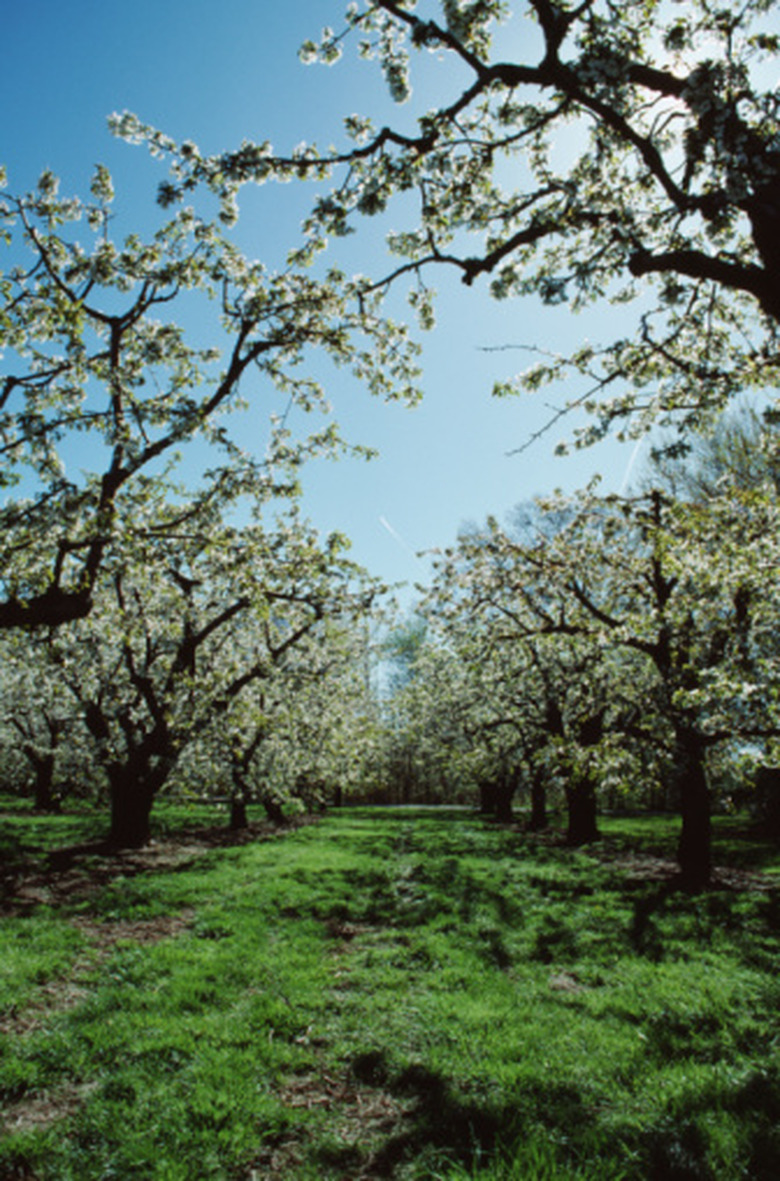When Do Pear Trees Blossom?
White flowers grace the bare branches of pear trees (Pyrus spp.) when they bloom from late winter to midspring, depending on climate. Three main types of pear trees are grown in American landscapes: ornamental or flowering pears (Pyrus calleryana), European pears (Pyrus communis) and Asian or apple pears (Pyrus pyrifolia). Ornamental pears bear profuse flowers and rarely fruit, while the European and Asian types look pretty in bloom and bear large, tasty fruits for eating.
Flowering Time Frame
Flowering Time Frame
Pear trees are among the first fruit and ornamental trees to bloom each year in the United States, flowering any time from late February to mid-April. Ornamental pears bloom about the same time as, or just before, yellow forsythia shrubs and redbud trees bloom. European pears bloom next, about one to two weeks later, followed by the Asian pear trees. Once flowering begins, cool, frost-free weather with little wind and rain creates a blossoming display that can last as long as two weeks. Heat shortens flower life and quickly encourages the unfurling of new pear leaves.
Regional Considerations
Regional Considerations
Gardeners and orchardists grow most of the various species and cultivars of pear trees in U.S. Department of Agriculture plant hardiness zones 4b through 8. The pear trees must receive ample winter cold in order to produce flowers in late winter or early spring. In the southern United States and at lower elevations, the pear trees bloom earlier, such as in February and early March. Farther north, or at higher elevations, the same pear tree would bloom later, such as from mid-March to mid-April.
Flowering Considerations
Flowering Considerations
Pear trees bloom so early that they often are damaged or killed by untimely late winter or early spring frosts. Since Asian pears are the latest to bloom, they tend to avoid problems with frosts and freezes. Pear trees begin blooming about two weeks before orchard cherry, peach and nectarine trees and about a month before apple trees.
Chilling Hours Considerations
Chilling Hours Considerations
The need for pear trees to endure a cold winter dormancy is called vernalization, and is measured in chilling hours — the number of hours between 32 and 45 degrees Fahrenheit. Pear trees need to endure between 600 and 1000 chilling hours to flower. Plant breeders developed low-chill pear varieties that may need only 400 hours. Low-chill pears may being to bloom very early, perhaps in late January or February, if the chilly winter is broken by a warm spell midwinter. It's best to avoid low-chill pear trees, especially Asian pears, in regions with winters that have alternating bouts of very warm and frosty periods.
References
- "Sunset Western Garden Book"; Kathleen Norris Brenzel, ed.; 2007
- California Gardens; Low Chill Deciduous Fruit Trees and Their Bloom Dates; Martin Fletcher; 2004
- Missouri Botanical Garden Plants in Bloom: Pyrus Calleryana "Bradford"
